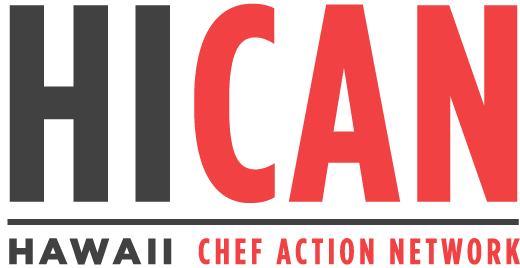The Problem
One out of every three bites of food we eat is from a crop pollinated by bees. Yet, over the past decade, we have witnessed an alarming decline in honey bee and other pollinator populations around the world. According to a government sponsored survey, on average, beekeepers reported 51.1% annual hive losses during the winter of 2013/14, with 66% of all beekeepers reporting higher losses than they deemed acceptable. Today, many beekeepers continue to report annual losses of 40-50%, with some as high as 100%.
Pollinators are not just bees! Pollinators include flies, beetles, butterflies, moths, bats, and birds. Many of these species are threatened today. For example, monarch butterflies are one of the most beautiful and iconic insects in the world, and they are in serious trouble. The monarch butterfly population in North America has been shrinking at an alarming rate because a significant portion of their breeding habitat is being destroyed. Maintaining healthy populations of pollinators is essential for the future of the world’s agricultural markets and for ensuring diversity in our global food supply.
The Solutions
There are easy ways that you can make a difference right from home.
1. Plant a Pollinator Garden or Create Pollinator Habitats
Pollinators need a diversity of nectar and pollen sources. Planting a pollinator garden can help encourage pollinator diversity and abundance. But remember – it is also important to ensure you are not planting flowers that have been pre-treated with pesticides, which can be harmful to pollinators. Most insecticide-treated plants are not labeled as such, so you may need to ask your garden or nursery center to confirm that the plants are not pre-treated and harmful to the very species you’re trying to help out.
Here are some of tips for planting a pollinator garden & creating habitats:
- Use a wide variety of plants - diversity in plants will promote diversity of pollinators
- Avoid pesticides and use plants/ seeds that have not been pretreated with neonics
- Help pollinators find and use flowers by planting in clumps, rather than single plants
- Native plants are adapted to your local climate, soil and native pollinators
- Provide nest sites for pollinators to nest, lay eggs and raise their young
- Night-blooming flowers will support pollinators such as moths and bats
- Suggested pollinator & butterfly plants for Hawai‘i include:
- Tropical milkweed (Asclepias curassavica)
- Mamaki (pipturus albidus)
- Crown flower (calotropis gigantea)
- Herbs such as mint, rosemary, basil and oregano
2. Avoid Pesticide Use
Yes, they make your lawn look pristine and pretty, but they’re actually doing the opposite to the life in your biosphere. The chemicals and pest treatments you put on your lawn and garden can cause damage to the health of honeybees and other beneficial insects and animals. These treatments are especially harmful if applied while the flowers are in bloom as they will get into the pollen and nectar and be taken back to the bee hive where they also get into the honey—which in turn means they can get into us. Pesticides, specifically neonicotinoid varieties have been one of the major culprits in Colony Collapse Disorder.
Pesticides can kill more than the target pest. Some pesticide residues can kill pollinators for several days after the pesticide is applied. Here are some suggestions for managing pest without using pesticides:
- Use integrated pest management techniques to prevent pest problems
- Encourage native predators with a diverse garden habitat
- Non-toxic homemade remedies are inexpensive and not harmful to pollinators
- Expect and accept a little bit of pest activity
3. Support Local Beekeepers
- Purchase honey from local beekeepers
- Consider becoming a beekeeper yourself
- Host a honey bee hive on your property
4. Adopt a Monarch
You can symbolically adopt a monarch butterfly and directly support World Wildlife Fund’s work to save this declining pollinator. They will put your adoption purchase to use immediately to support their work to protect and restore monarchs and other vulnerable wildlife. They offer $25 Monarch butterfly adoption kits here.
5. Sign a Petition Now to Protect Pollinators
Sign the petition to tell U.S. Fish & Wildlife Services to protect the threatened Monarch butterfly.
Sign the petition to tell congress to suspend bee-toxic pesticides.
Sign the petition to tell the White House Pollinator Health Task Force that their Pollinator Plan aims high but falls short.
6. Volunteer
The Kohala Center is a community-based center for research, conservation, & education (Hawai‘i Island only). The Kohala Center turns research and ancestral knowledge into action, so that communities in Hawai‘i and around the world can thrive—ecologically, economically, culturally, and socially. Their main areas of interest are energy self-reliance, food self-reliance, and ecosystem health.
Hawai‘i Center for Food Safety works to protect human health and the environment from the harmful impacts of industrial agriculture on the Islands, and promote a vibrant local food system by supporting sustainable farming, soil restoration and seed saving projects.
Resources
More Information for Protecting Pollinators
The White House and President Obama have recently started an initiative to save the bees
The EPA site on Protecting Bees and Other Pollinators from Pesticides
Hawai‘i Apiary Program provides services to the bees and the beekeeping industries in Hawai‘i
Hawai‘i Honey Festival is celebrated annually on the Big Island
The UH Honeybee Project has a website for beekeepers and farmers to keep informed of the bee-varroa issues on the islands and to facilitate the transfer of information from the University to the public

